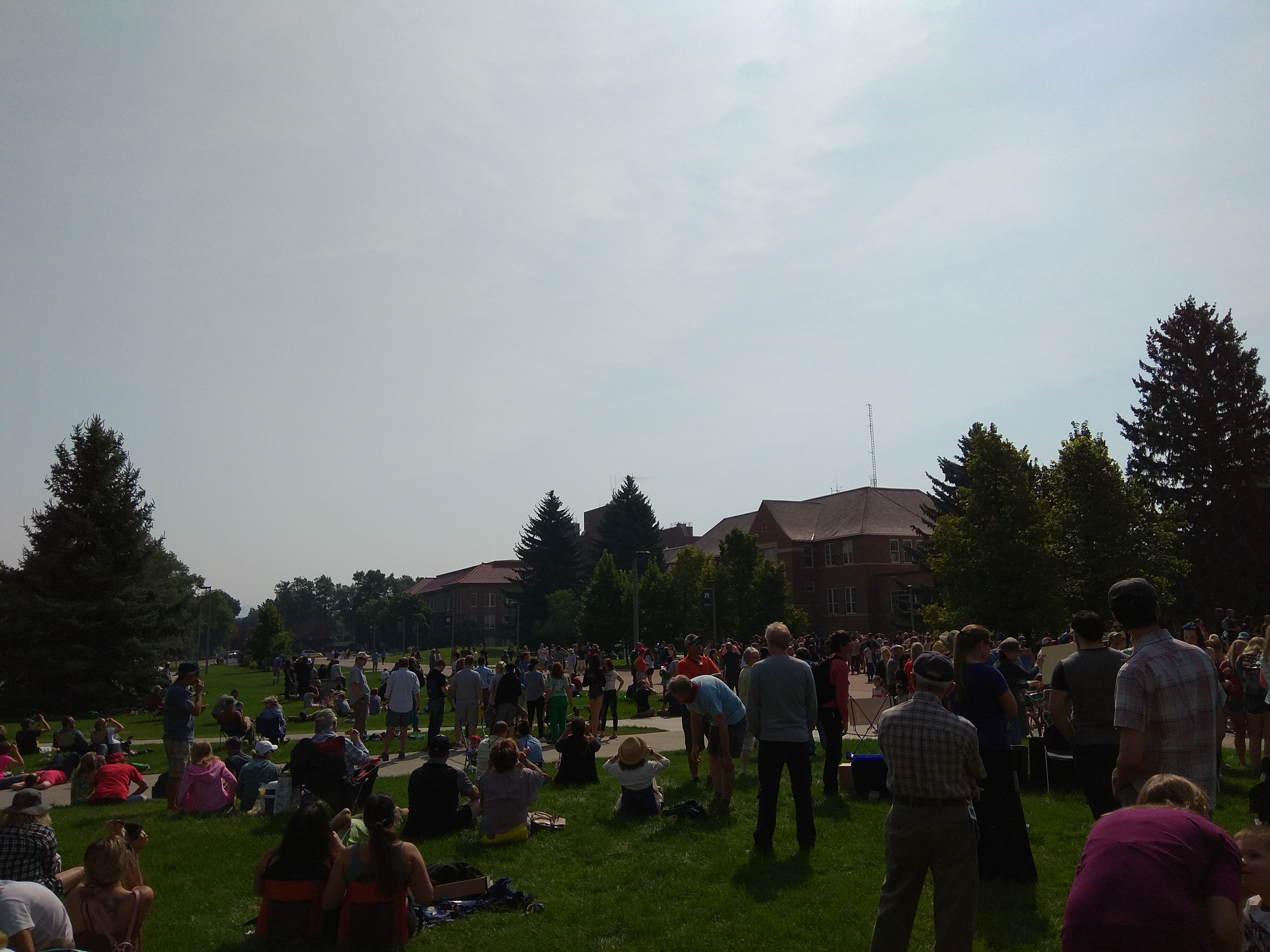

Location: Barnard Hall (formerly EPS building), Montana State University, Bozeman MT.
| Date | Time (MDT) |
Altitude Sun (deg) |
Degree of Eclipse mag.(*) obsc.(**) |
Notes | Image plots (Zenith is up) [back to summary plot] |
|---|---|---|---|---|---|
| 2017/08/21 | 10:17:54 | 37.7 | 0.000, 0.000 | Eclipse begins | |
| 2017/08/21 | 10:20:00 | 38.0 | 0.028, 0.006 | ||
| 2017/08/21 | 10:40:00 | 41.1 | 0.295, 0.185 | ||
| 2017/08/21 | 11:00:00 | 44.0 | 0.554, 0.456 | ||
| 2017/08/21 | 11:20:00 | 46.8 | 0.806, 0.761 | ||
| 2017/08/21 | 11:35:52 | 48.8 | 0.956, 0.951 | Greatest eclipse | |
| 2017/08/21 | 11:40:00 | 49.3 | 0.936, 0.927 | ||
| 2017/08/21 | 12:00:00 | 51.5 | 0.709, 0.641 | ||
| 2017/08/21 | 12:20:00 | 53.3 | 0.467, 0.358 | ||
| 2017/08/21 | 12:40:00 | 54.7 | 0.224, 0.124 | ||
| 2017/08/21 | 12:58:36 | 55.7 | 0.000, 0.000 | Eclipse ends |

 |
 |
 |
|
|
|
|
|
|
|
|
|
|
|
|
|
|
|
Collage image by Paul Rugheimer (observed in Wyoming)
